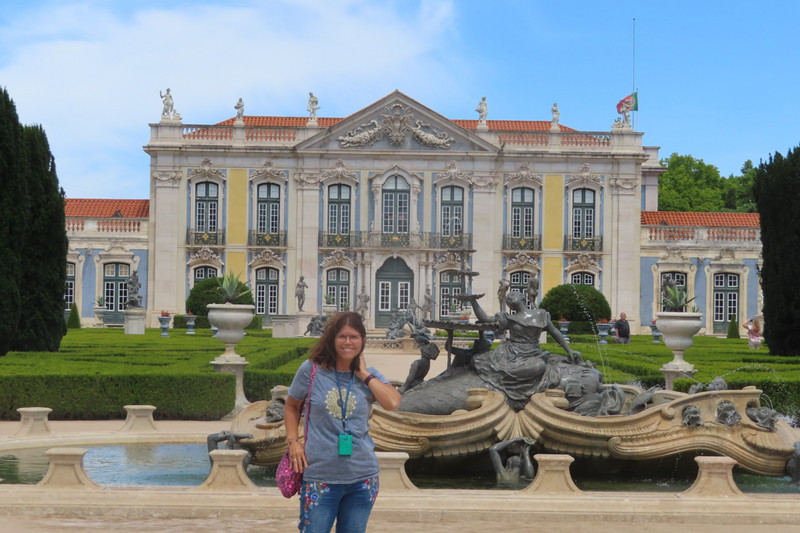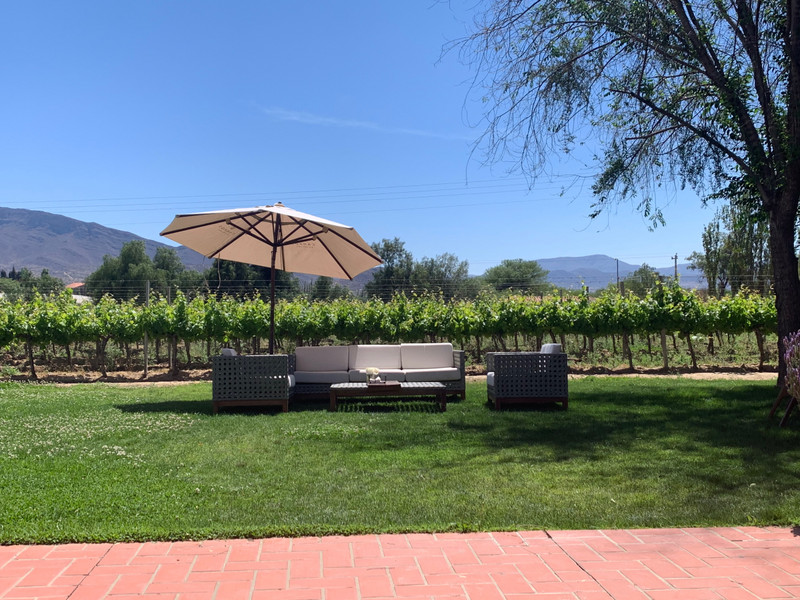We started out our day, after a delicious breakfast of course, with a tour of Lisbon. Our local guide Leonore was great! The first portion of the tour was just a bus ride through Lisbon, pointing out some of the squares and a little of the local history. Lisbon proper isd about 800,000 people. But it has a traditional outside the city of about another 2 million people, many of whom work in the city at the end of the day.
The city has been a major city for a very long time. It is the second oldest city in Europe – only Athens is older. Its early days included about 500 years of of rule by the Moors. The heyday of Lisbon is in the 15th and 16th centuries when world exploration flourished, and Vasco de Gama discovered the first trade route to India. But Lisbon today is a very modern looking city, and doesnt have the narrow street layout of a lot of European cities. The reason is that in 1755, there was a large earthquake, followed by a larger tsunami, both of which sparked fires throughout the city that lasted for over
a week. The result is that over of the city was totally destroyed. The rebuilt city involved new road layouts, and structured the city like any modern 18th century city. The result today is a city that doesnt look a lot different than any other major metropolis.
Our next stop was supposed to be at the Jeronimos Monastary. It is one of the few structures to survive the 1755 earthquake. But there was evidently a UN Ocean Conference going on today, and the area outside the monastery was shut down, patrolled by military, and setting up for a parade. So we were only able to view a little of the monastery from the outside until the police chased us away. We walked down the street, under the thoroughfare, and over to the Discoveries Monument, Portugals most famous the many voyages of discovery performed by Portuguese explorers. Waiting for us at the monument was Dominic, wearing a chefs hat, and ready with some fresh Pasteis de Nata, which he claimed were the best Pasteis de Nata in the world. They were certainly delicious, and the best we had so far!
the city, it was time to head out to the Portuguese Riviera, but first a stop at the Queluz National Palace, just outside Lisbon. This started out as a summer palace, but after Lisbon was destroyed in 1755, the royal family move to the Queluz Palace full time until another could be built. Lenore told us the story of the ugly royal family that somehow eventually were able to produce a few good looking heirs. She was definitely right, the royal portraits were some of the homeliest royals I had ever seen! The palace was beautiful, of course and we were able to tour it entirely. Leonore was a wealth of information about the palace and the royalty that occupied it. Especially about Carlota, a princess from Spain that married the 18 year old king when she was only 10. This was not the typical princess story however, it turns out she was a terrible child who grew up to be an even worse adult. Not only was she unattractive, but she was despised by both the Portuguese and Brazilian public, spent money wildly, and had several children, some with men other than the king. She was so bad, that
At the end of the Palace tour, we headed out to visit the Atlantic beachfront. The first part was Guincho Beach. This is a beautiful beach, but because of the bad luck of geography, nothing can really grow there. The beach is situated between the ocean and the surrounding mountains in such a way that the wind swirls off the mountains and back to the beach so that there is always a constant high wind. The beach sand blows over the road and needs to be swept off the road periodically, and the wind is so high, that the trees near the beach can only barely grow as high as a bush. We got out of the bus for a few minutes to take some pictures, but it wasnt fun to walk around.









